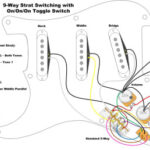Taylor Swift’s “Teardrops on My Guitar” is a quintessential tale of unrequited love, capturing the teenage angst and longing familiar to many. Released as part of her self-titled debut album, this song quickly resonated with listeners worldwide thanks to its relatable narrative and catchy melody. The lyrics paint a vivid picture of a young woman silently pining for her friend Drew, who is oblivious to her feelings and instead captivated by another girl. Let’s delve into the heart of these lyrics and explore what makes this song so enduringly popular.
The song opens with a poignant scene: “Drew looks at me / I fake a smile so he won’t see / That I want and I’m needing / Everything that we should be.” These lines immediately establish the central conflict – the narrator’s hidden feelings and the painful pretense she maintains to mask her emotions. The line “Everything that we should be” hints at the deep-seated belief that they are meant to be together, a common sentiment in teenage crushes. This sets the stage for a narrative of longing and unspoken desires.
The introduction of Drew’s love interest, “that girl he talks about,” further intensifies the narrator’s pain. “I’ll bet she’s beautiful, that girl he talks about / And she’s got everything that I have to live without.” This comparison highlights the narrator’s feelings of inadequacy and envy. She imagines this other girl as possessing all the qualities she lacks, amplifying her own sense of being overlooked. This common experience of idealizing a romantic rival adds a layer of realism to the song’s emotional landscape.
As the song progresses, the lyrics reveal the narrator’s internal struggle. “Drew talks to me / I laugh ’cause it’s just so funny / That I can’t even see / Anyone when he’s with me.” Her laughter is a defense mechanism, a way to cope with the irony and pain of being close to Drew yet emotionally distant. The phrase “I can’t even see / Anyone when he’s with me” underscores the intensity of her focus on Drew, highlighting how he consumes her thoughts and vision.
The chorus is the emotional core of the song, famously declaring: “He’s the reason for the teardrops on my guitar / The only thing that keeps me wishing on a wishing star.” The metaphor of “teardrops on my guitar” is both evocative and unique, symbolizing her silent sorrow and the way music becomes an outlet for her emotions. Wishing on a star represents a yearning for a change in fate, a desire for her dreams to come true. The line “He’s the song in the car I keep singing. Don’t know why I do” further emphasizes Drew’s pervasive presence in her life, even her subconscious thoughts are filled with him.
The second verse continues to paint a picture of Drew’s obliviousness and the narrator’s hidden pain. “Drew walks by me / Can he tell that I can’t breathe? / And there he goes, so perfectly / The kind of flawless I wish I could be.” Her breathlessness signifies the anxiety and intensity she feels in his presence. Drew is idealized as “perfectly flawless,” a common perception when one is infatuated. This reinforces the narrator’s feelings of inadequacy and her belief that she is not good enough for him.
The bridge shifts the perspective slightly, introducing a note of possessiveness and warning towards Drew’s girlfriend. “She’d better hold him tight, give him all her love / Look in those beautiful eyes and know she’s lucky ’cause.” This reveals a subtle layer of resentment and a sense that Drew is unaware of his own worth and the narrator’s deep feelings for him. It’s a moment of protective jealousy, highlighting the depth of her unacknowledged love.
The song concludes with a sense of resignation and lingering heartbreak. “So, I drive home alone / As I turn out the light / I’ll put his picture down / And maybe get some sleep tonight.” Driving home alone symbolizes her isolation and solitude. Putting his picture down is a symbolic attempt to distance herself, though the “maybe get some sleep tonight” suggests the struggle to find peace remains.
The final repetition of the chorus, including the added line “He’s the time taken up, but there’s never enough / And he’s all that I need to fall into,” emphasizes the consuming nature of her love. Drew occupies her thoughts and time, yet it’s “never enough” because her feelings are unreciprocated. The phrase “all that I need to fall into” suggests a desire to fully surrender to her feelings, even though it brings pain.
“Teardrops on My Guitar” is more than just a teenage love song; it’s a poignant portrayal of unrequited love, silent longing, and the bittersweet pain of unspoken feelings. Its enduring appeal lies in its honest and relatable depiction of emotions that many experience, making it a standout track in Taylor Swift’s early discography and a fan favorite to this day.


